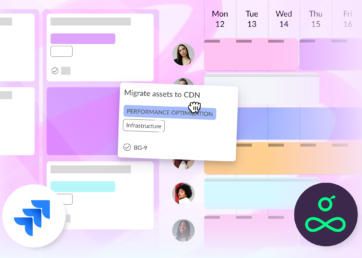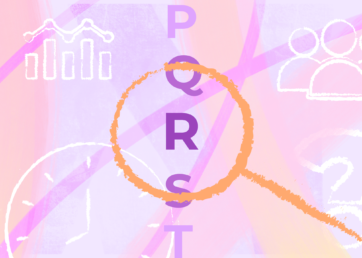Why is it that something as important as resource planning is so often not given the due attention it deserves? Many projects have come unstuck due to the failure to plan resources accurately throughout their lifecycle.
“Give me six hours to chop down a tree, and I will spend the first four sharpening an axe.” – Abraham Lincoln
Spending time creating a good resource management plan is like “sharpening the axe.” OK it may be over-stating things to say that it should constitute two thirds of your project, but the point is that spending a little extra time up front paves the way for a smooth journey. Your plan goes hand-in-hand with your project resource planning activities to ensure optimal allocation of time and resources.
This resource management planning guide is for project managers who want to truly optimize how they use their resources. We’ll discuss what makes a plan effective and how to execute it.
In this article 📖
What is a resource management plan?
Resource management refers to the efficient, effective use of the various resources associated with a project. A resource management plan accounts for all of the resources (humans, workspaces, tools, and equipment) you require on a project and guides how they will be categorized, allocated, managed, and released.
Resource management plans provide a framework to optimize your resource’s availability to efficiently meet your project goals. Quality plans reveal if you need more or less of a certain kind of resource, like specialized staff members or a specific piece of equipment. They highlight how to time your resources so that you can reduce idle time. This exercise will also highlight any periods in your project where there are capacity constraints and you may need to hire external freelancers.
Providing the people in your organization with a resource management plan helps ensure that you can put the right resources in the right place at the right time as much as possible.
Resource management plan key terms
Project managers can find it very helpful to become familiar with the key terms associated with resource management planning. Below, we’ve listed some common terms related to resource management plans.
- Resource allocation – The process of allocating resources to projects (or specific tasks) based on availability and need.
- Resource forecasting – The process of predicting your future resource requirements before a project begins. Project managers must be familiar with the project lifecycle, know the project’s objectives, and have an inventory of resources needed.
- Resource leveling – The process of overseeing resource allocation and resolving any possible conflict that may arise from over-allocation.
- Resource breakdown structure – A comprehensive list of resources, filtered by function and type, required to complete a project.
- Resource calendar – This shows all of the days that a particular resource will be available.
- Project calendar – Reflects the working and non-working days for individual projects or tasks.
- Those responsible – The person or people responsible for completing a task.
- Those accountable – The person or people who ultimately own the task. They’re the ones who will be signing off on it once it is complete.
- Those who should be consulted – Any subject matter experts or fact checkers who should be consulted as part of ensuring the integrity and effectiveness of the project.
- Those to keep informed – Any individuals or teams, including stakeholders, who should be kept informed of progress on the project.
The main components of an effective resource management strategy
Here are the main components that go into an effective resource management strategy:
- Understand the goals of the project. You need a good grasp of the end objectives in order to define the path to getting there. What are the key deliverables? Document them.
- Know your budget. Most project managers are measured on how well they keep project budgets in check, and resources can form one of the biggest components of the budget. You need to know how much you have all together and be able to estimate how much of that should go toward resources.
- Know where your project resources come from. Do you have all you need internally? Will you need vendors, freelancers, or contractors?
- Know what you’ll need contractually. For example, your company probably has preferred contracts to use with vendors, and you may need new contracts if you’re bringing temporary workers on board.
- Define the roles of the project team. Who do you need and what do you need them for? Which stakeholders ultimately sign off on deliverables? Defining roles and responsibilities is essential for minimizing any conflict or confusion.
- Have a robust set of policies and procedures. For example, you’ll need policies for obtaining new resources and for managing your resource’s workloads.
- Define how performance will be measured on the project. Your KPIs should be directly related to the project goals.
Creating a resource management plan in 4 steps
These steps will help you to create a robust resource management plan:
#1. Determine your resource needs for the project
Step one of your plan is to figure out exactly which resources are needed. We’re talking about everything, from the people to the equipment and space required to do the work.
How will you define all of the resources needed?
- Define the goals of the project
- Define the tasks that are required to see the project to completion
- Break the project into stages and define what is required for each
You might even have a similar project from the past that can help to act as a guide.
#2. Match the resources to the task
Your next step is to ensure the right resources are assigned to the right tasks. Take advantage of a robust resource scheduling tool to do so. Resource Guru offers a streamlined approach to resource scheduling that quickly helps you to find the right resources for the right job. If you’re not yet ready for our solution, we offer a free resource scheduling template.
Your human resource management plan is an instrumental tool to use here. This plan should list all of your human resources along with their skills and experience, helping you to match them to tasks.
#3. Schedule resources
Your resources need to be scheduled based upon the time needed to complete the task and their availability for doing so. There’s an art to avoiding over-scheduling or under-scheduling resources while ensuring you still complete the project on your agreed timeline.
The availability of your resources can be one of the most complex parts of scheduling. They may be working on other projects in parallel and have commitments that they must see through before working on your project. They might also be on leave.
One best practice is to focus on the resources you have that are in short supply first. You’ll often find the 80/20 rule applies, with 80% of the constraints coming from 20% of key resources. Planning around the availability of these resources can help to avoid project bottlenecks.
#4. Monitor project progress
Unlike individual projects, resource management plans last indefinitely. Monitor progress carefully so that you can be proactive if any changes are needed. For example, you can check in with how actual performance is tracking against what you forecast in your plan. You might find that some tasks are in danger of stalling, or that other tasks are on track to be completed much more quickly than expected.
Plans work well for resource management until there is an unexpected conflict. Stay agile.
Benefits of creating a resource management plan
Creating a resource management plan is highly beneficial for the successful management of your project. Some of the main benefits include:
- The ability to foresee potential roadblocks. Projects don’t move ahead without resources, so your resource management plan plays a key role in establishing the availability of resources and any constraints. For example, if you know that someone’s availability to work on your project is dependent on them finishing something for another project, you can make contingencies in case they are held up.
- Your plan provides visibility and transparency. For example, others can see the bandwidth of team members by looking at the resource management plan. This helps with planning for any other projects.
- You can measure the effectiveness of your plan and use that information to inform future projects. For example, utilization vs. efficiency is an important measure for project managers because it indicates how much real work is getting done.
- Balance your team’s workload. Over-scheduling is a recipe for eventual burnout, a condition no one is immune to. By staying on top of scheduling, you can ensure that team members aren’t overstretched.
- Get in early where resources are limited. For example, if you need to hire contractors, but every business in town is heavily booked, the earlier you can get on their schedule the better. The same goes internally – you might have essential people who are in high demand and require a lot of notice of work to be done.
- Stay on top of costs and quickly calculate costs associated with resources to keep your project within budget.
Resource Management Guide: Key Takeaways
A resource management plan is essential for the smooth management of projects. It may be time-consuming to put together, but the benefits of transparency, workload management, early communication, and the ability to be proactive make your plan well worth the effort.
Try to ensure you are using high-quality resource management software. Resource Guru gives you clear visibility of your team’s capacity. You’ll be able to assign the right people to the right task and avoid over-allocation. When changes are needed, it’s quick and easy and everyone’s kept in the loop.
Start a fully-featured free trial with Resource Guru here.





